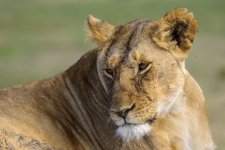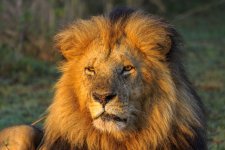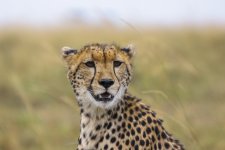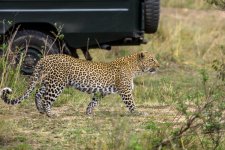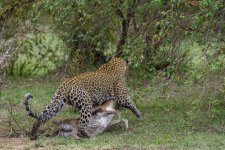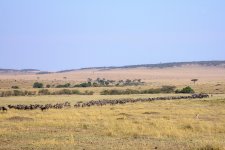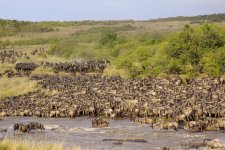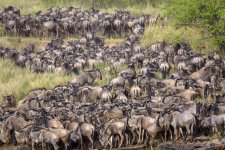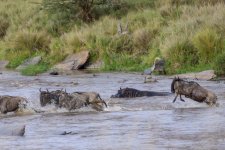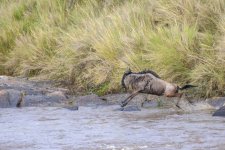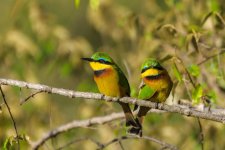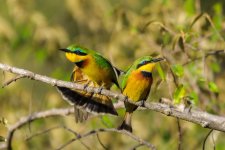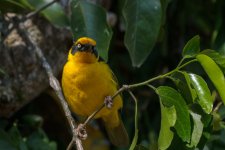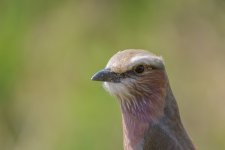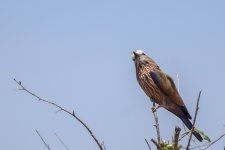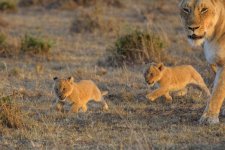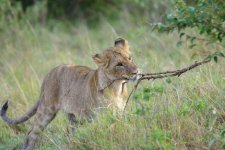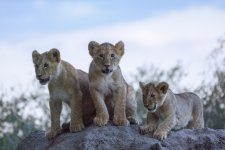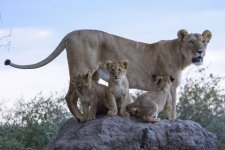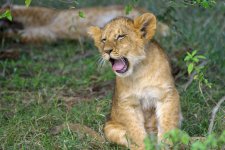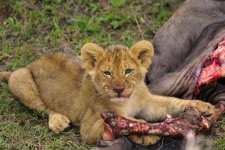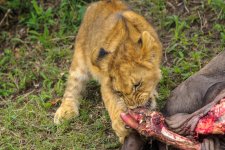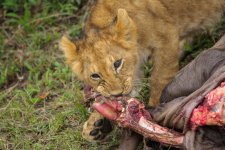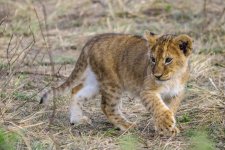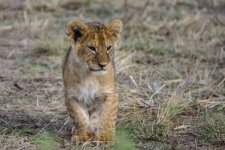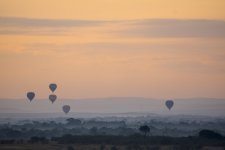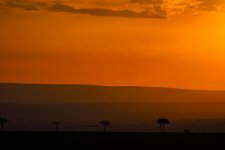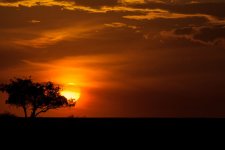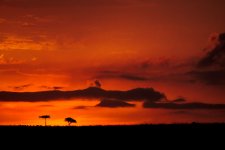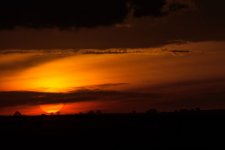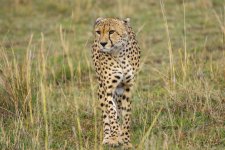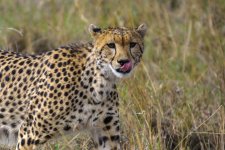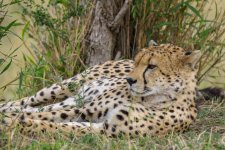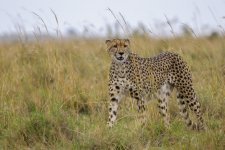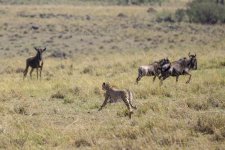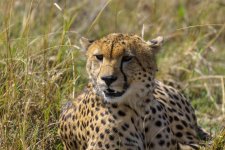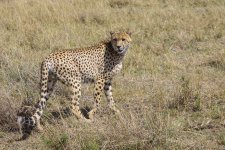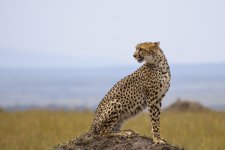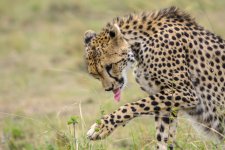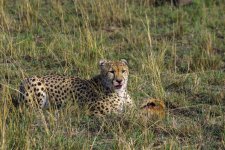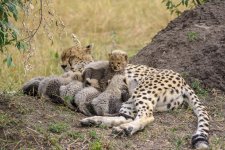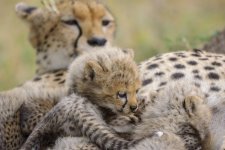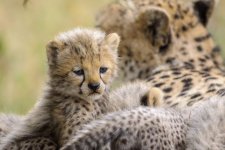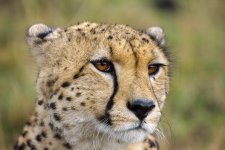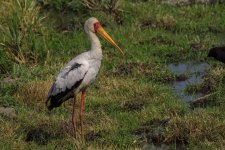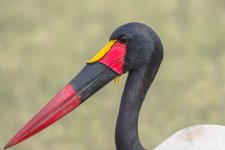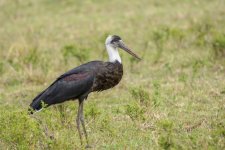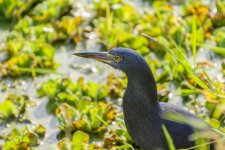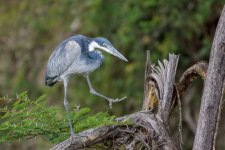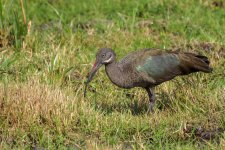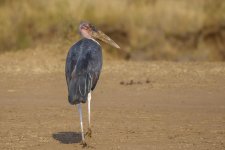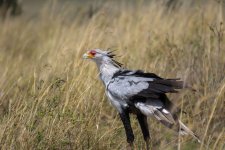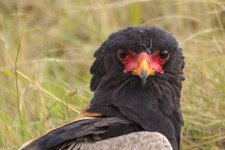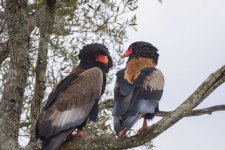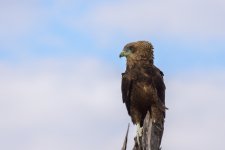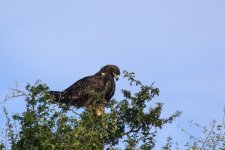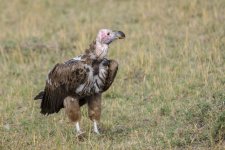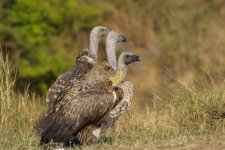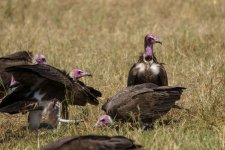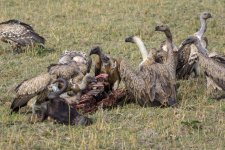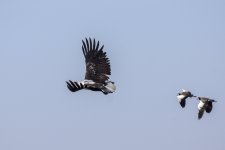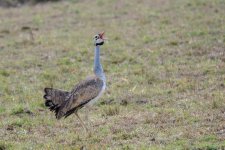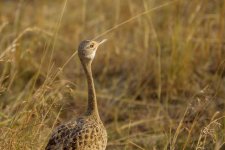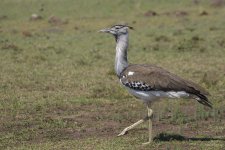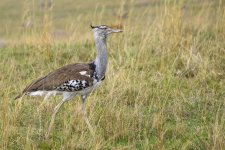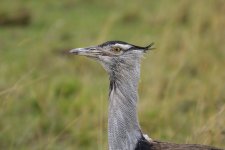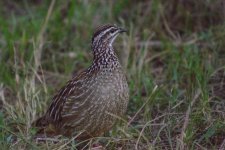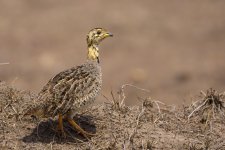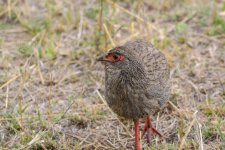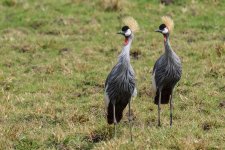kitefarrago
Well-known member
When two sets of plans for a holiday had fallen through, and I found myself without anything booked in May, I decided to finally visit Eastern, rather than Southern, Africa.
For professional reasons I can only get away at specific times of year, and the summer is the longest such period. A lot of wildlife tour companies seem to avoid that time of year for many destinations (presumably because it is high season). I don't have close friends who share my interest in wildlife so organizing my own trip becomes rather expensive.
Since I knew I would be travelling alone I decided to pick a destination that was interesting enough not to require a change of location, and fairly soon settled on the Masai Mara.
The time when I was going to travel was largely fixed, and knowing that the migration would be in the Masai Mara at this time of the year helped make up my mind. I ended up staying for a fortnight at Brian Freeman's camp on the Olare Orok river.
I'm not going to make this a day-by-day account since the structure of the days was the same - instead I'll use the different instalments to comment on various aspects of the trip.
I hope that this will give an idea of what one may be able to see in the Mara at this time of year, and I also hope to give some idea of the general experience. It's an expensive destination, but it offers sightings which are hard to beat.
The Masai Mara
The Masai Mara is a game reserve in South-west Kenya. It's 1500 square km in size (in comparison, Kruger National park is 19,500 square km), but in the surrounding area there are private reserves managed by local communities which are adding to eco-system.
It's not that large for a traditional African park, but it's been protected for a comparatively long period, and many of its animals, in particular cats, are habituated to cars. The big cats also occur at a high density. The terrain is open, with trees growing only in the vicinity of rivers and streams.
When I arrived the wildebeest migration had been present for an unusually long period already, and in most areas the grass was short. An unwelcome consequence of this was that we saw none of the smaller cats or Bat-eared Foxes that I had hoped for.
The Masai Mara forms one eco-system with the Serengeti in Tanzania, from which it is merely separated by the Mara river. The `big five' (Lion, Leopard, Cape Buffalo, Elephant and Rhino) can be found in the Mara, and I saw four of those (we could have chased a rhino that was seen one day but didn't).
There are a number of camps in the Masai Mara (too many, probably), and they typically offer fairly inclusive packages consisting of accommodation, food, and safari drives. But different camps place a different emphasis on what they are about, for example, some of these offer game drives in the early morning, returning to camp for breakfast, with another drive in the late afternoon, while others have more flexible schedules.
The vehicles vary widely too: Many are closed and one watches out of a roof hatch, while others have windows that can be fully opened. Most of these vehicles are on a long wheel base with three rows of seats plus the driver's in front of that. In a full vehicle getting a good look at anything can be problematic. The budget option for a visit to the Mara is to travel from outside the reserve in one of the many mini-buses, but this involves a lot of driving, the vehicles aren't really suited to the task, the drivers have nothing like the training of the proper guides, and it takes a long time to get deeply into the reserve, if that is possible at all. If there's any rain then the area the minibuses can go becomes even more restricted.
Staying in these camps is not cheap, and prices depend on exclusivity and the luxury element, plus what is already included in the daily rate. I'll comment some more on the camp I stayed at, plus its vehicles, in a later post.
I wanted to see, and photograph, cats on this trip and as you can see from the attached photos I wasn't disappointed. The birding side was successful as well, with 175 species recorded over the fortnight (with a couple of cisticolas identified from photos with the help of the ID forum on this site).
Andrea
For professional reasons I can only get away at specific times of year, and the summer is the longest such period. A lot of wildlife tour companies seem to avoid that time of year for many destinations (presumably because it is high season). I don't have close friends who share my interest in wildlife so organizing my own trip becomes rather expensive.
Since I knew I would be travelling alone I decided to pick a destination that was interesting enough not to require a change of location, and fairly soon settled on the Masai Mara.
The time when I was going to travel was largely fixed, and knowing that the migration would be in the Masai Mara at this time of the year helped make up my mind. I ended up staying for a fortnight at Brian Freeman's camp on the Olare Orok river.
I'm not going to make this a day-by-day account since the structure of the days was the same - instead I'll use the different instalments to comment on various aspects of the trip.
I hope that this will give an idea of what one may be able to see in the Mara at this time of year, and I also hope to give some idea of the general experience. It's an expensive destination, but it offers sightings which are hard to beat.
The Masai Mara
The Masai Mara is a game reserve in South-west Kenya. It's 1500 square km in size (in comparison, Kruger National park is 19,500 square km), but in the surrounding area there are private reserves managed by local communities which are adding to eco-system.
It's not that large for a traditional African park, but it's been protected for a comparatively long period, and many of its animals, in particular cats, are habituated to cars. The big cats also occur at a high density. The terrain is open, with trees growing only in the vicinity of rivers and streams.
When I arrived the wildebeest migration had been present for an unusually long period already, and in most areas the grass was short. An unwelcome consequence of this was that we saw none of the smaller cats or Bat-eared Foxes that I had hoped for.
The Masai Mara forms one eco-system with the Serengeti in Tanzania, from which it is merely separated by the Mara river. The `big five' (Lion, Leopard, Cape Buffalo, Elephant and Rhino) can be found in the Mara, and I saw four of those (we could have chased a rhino that was seen one day but didn't).
There are a number of camps in the Masai Mara (too many, probably), and they typically offer fairly inclusive packages consisting of accommodation, food, and safari drives. But different camps place a different emphasis on what they are about, for example, some of these offer game drives in the early morning, returning to camp for breakfast, with another drive in the late afternoon, while others have more flexible schedules.
The vehicles vary widely too: Many are closed and one watches out of a roof hatch, while others have windows that can be fully opened. Most of these vehicles are on a long wheel base with three rows of seats plus the driver's in front of that. In a full vehicle getting a good look at anything can be problematic. The budget option for a visit to the Mara is to travel from outside the reserve in one of the many mini-buses, but this involves a lot of driving, the vehicles aren't really suited to the task, the drivers have nothing like the training of the proper guides, and it takes a long time to get deeply into the reserve, if that is possible at all. If there's any rain then the area the minibuses can go becomes even more restricted.
Staying in these camps is not cheap, and prices depend on exclusivity and the luxury element, plus what is already included in the daily rate. I'll comment some more on the camp I stayed at, plus its vehicles, in a later post.
I wanted to see, and photograph, cats on this trip and as you can see from the attached photos I wasn't disappointed. The birding side was successful as well, with 175 species recorded over the fortnight (with a couple of cisticolas identified from photos with the help of the ID forum on this site).
Andrea




